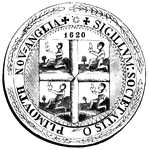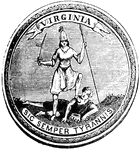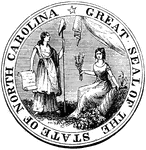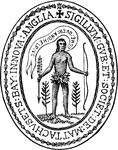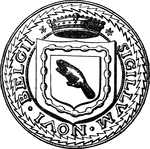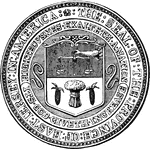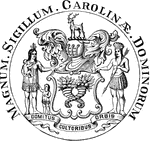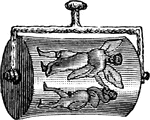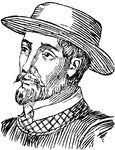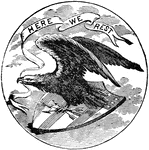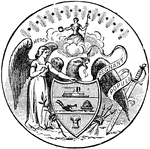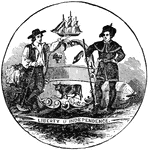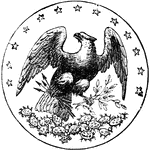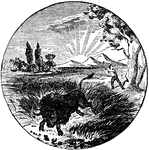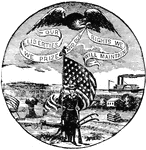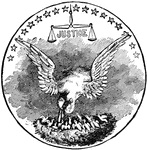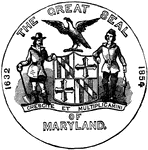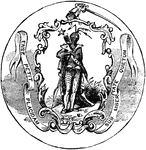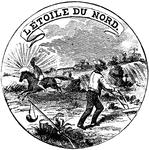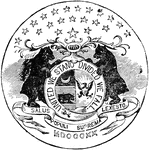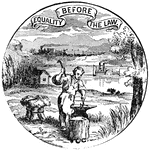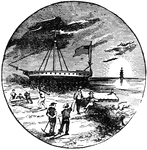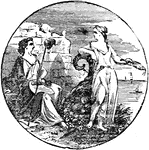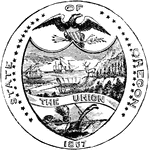
Siren lacretina
"Two feet long, black above and dusky beneath. It is of an eel-like form, lives in the muddy water of…

Plaice
"Weighing six to twelve pounds; it feeds on mollusca, crustacea, and young fish; inhabits sandy banks…
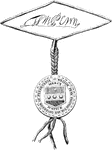
Penn's seal and signature
"Penn's Seal and Signature. This is a representation of the seal and signature of William Penn attached…

William Tryon Seal
"Seal and signature of Tryon. William Tryon was a native of Ireland, and was educated to the profession…

Frederica
"Ruins of Oglethorpe's Barracks at Frederica. This is from a sketch made by W. W. Hazzard, Esq., in…
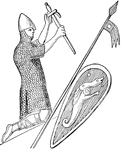
William the Conqueror
"William the Conqueror (1066-1087), as represented on his seal. Although William really ruled 'as king…

Troilus Butterfly
"The Troilus Butterfly, Papilio Troilus, is a superb insect, the wings denticulated, black,…
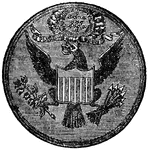
Eagle on Seal of United States
"The Eagle is a gold coin of the United States, value $10; half-eagle, $5; quarter-eagle, $2.50, double…

Gopher
"Gopher is a name given by the early French settlers in the United States to various animals which honeycomb…

Hooded Seal
"The Seal, of the family Phocidæ, or seal tribe, are, of all four-limbed mammiferous animals,…

Pear Design
"Also known as the cone, the palm leaf, the river loop, the crown jewel, the seal, the almond, the feather,…
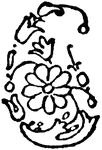
Pear Design
"Also known as the cone, the palm leaf, the river loop, the crown jewel, the seal, the almond, the feather,…

Pear Design
"Also known as the cone, the palm leaf, the river loop, the crown jewel, the seal, the almond, the feather,…

Pear Design
"Also known as the cone, the palm leaf, the river loop, the crown jewel, the seal, the almond, the feather,…
Pear Design
"Also known as the cone, the palm leaf, the river loop, the crown jewel, the seal, the almond, the feather,…
Pear Design
"Also known as the cone, the palm leaf, the river loop, the crown jewel, the seal, the almond, the feather,…
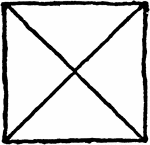
Solomon's Seal
Built on the right angle triangle and, like the Signet of David, it is found in many of the Turkish…
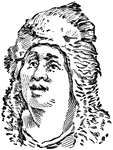
Osceola
A noted chief of the Seminole Indians, born in Georgia in 1804; died Jan. 30, 1838. He was the son of…

Palmetto
A species of palm indigenous to the United States. It is found abundantly in the Carolinas, Florida,…

Seal
The general name of certain genera of carnivorous mammals, havin feet adapted for swimming, and being…
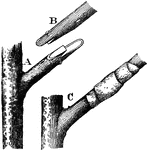
Tongue Grafting
To graft two plants together using the tongue or whip grafting approach, you must first make a sloping…
